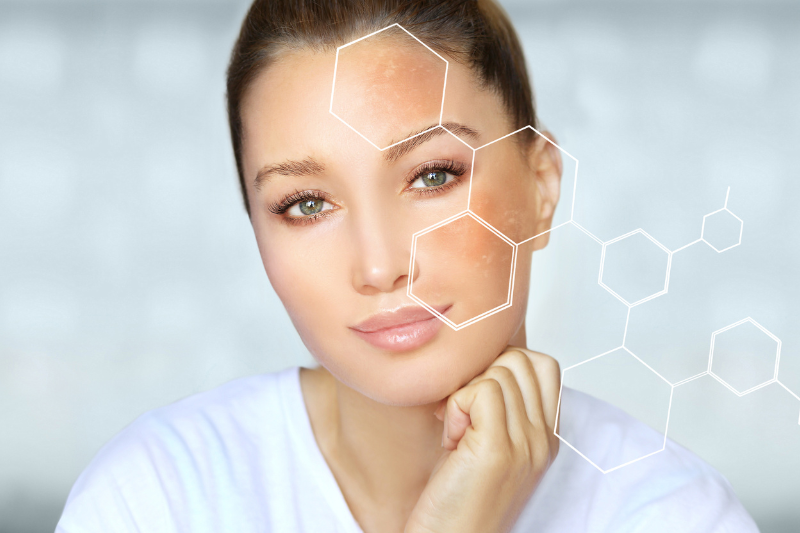Botox Migraine Treatment
Kevin Loughlin has trained with Allergan (manufacturers of Botox) in the use of botulinum toxin for the prevention of Chronic Migraines. He qualified as a BSc (Hons) RGN nurse in 1992 and subsequently as a BSc (Chiro) Doctor of Chiropractic in 1996. He has been treating headaches in private practice for the past 19 years.
When you come for consultation it is important to bring a list of drugs and other treatments you have tried, including a migraine diary if you have one.
Customer Reviews
Treatment
There are three different levels of migraine treatment:
- Preventative treatment (stopping attacks from happening)
- Acute treatment (treating an attack as soon as it happens)
- Rescue treatment (dealing with an attack if acute treatment does not work)
Some people are prescribed a number of different drugs before they find a treatment course that suits them. You may find it useful to keep a note of all the drugs you have taken, and how they affected your attacks. This can help you to discuss your treatment history with a doctor long after these details may have been forgotten.
What is a migraine?
Migraine is a chronic health condition. Most people who suffer from migraines get headaches that can be severe. A migraine headache is usually an intense, throbbing pain on one, or sometimes both, sides of the head. Most people with migraine headache feel the pain in the temples or behind one eye or ear, although any part of the head can be involved. Besides pain, migraine also can cause nausea and vomiting and sensitivity to light and sound. Some people also may see spots or flashing lights or have a temporary loss of vision.
Migraine can occur any time of the day, though it often starts in the morning. The pain can last a few hours or up to 72 hours. Some people get migraines once or twice a week. Others, only once or twice a year. Most of the time, migraines are not a threat to your overall health. But migraine attacks can interfere considerably with your day-to-day quality of life.
We don’t know what causes migraine, but some things are more common in people who have them:
- Often, migraine affects people most severely between the ages of 15 and 55.
- Most people have a family history of migraine or of disabling headache.
- They are more common in women.
- Migraine often becomes less severe and less frequent with age.
How common is migraine?
Migraine pain and symptoms affect 18% of women and 8% of men. According to the Department of Health (2005) eight million people get migraine making it the most prevalent long term neurological condition. Migraine is the most common form of disabling headache that sends patients to see their doctors.
What causes migraine?
The exact cause of migraine is not fully understood. Migraine has long been observed to run in families so it is thought that there is a genetic component in migraine. Most researchers think that people who have migraine have a more than usually sensitive or ‘hyper-excitable’ brain, so that they are much more sensitive to stimuli that would not affect someone not prone to migraine. The degree of sensitivity is possibly genetically determined, influencing the threshold for triggering attacks. Migraine symptoms are thought to be due to abnormal changes in levels of substances that are naturally produced in the brain. Changes in blood vessels are now thought to be secondary to more important changes in brain chemistry.
Recent research has identified genes for rare types of migraine. People who get migraines may have abnormal genes that control the functions of certain brain cells.
Experts do know that people with migraines react to a variety of factors and events, called triggers. These triggers can vary from person to person and don’t always lead to migraine. A combination of triggers — not a single thing or event — is more likely to set off an attack. A person’s response to triggers also can vary from migraine to migraine.
Frequently mentioned migraine trigger factors include:
- Lack of or too much sleep
- Skipped meals, getting hungry or not eating enough
- Bright lights, loud noises, or strong odours
- Hormone changes during the menstrual cycle
- Stress and anxiety or relaxation after stress
- Some weather changes
- Alcohol
- Caffeine (too much or withdrawal)
- Changes of routine and travel
Are there different types of migraine?
Yes, there are many forms of migraine. The two forms seen most often are migraine with aura and migraine without aura.
Migraine with aura (previously called classical migraine).
With a migraine with aura, a person might have these sensory symptoms (the so-called “aura”) 10 to 30 minutes before an attack:
- seeing flashing lights, zigzag lines, or blind spots
- numbness; or tingling in the face or hands
- disturbed sense of smell, taste, or touch
- feeling mentally “fuzzy”
Only one in five people who get migraine experience an aura.
Migraine without aura (previously called common migraine).
With this form of migraine, a person does not have an aura but has all the other features of an attack.
How can I tell if I have migraine?
Compared with migraine, tension-type headache is generally less severe and rarely disabling. Compare your symptoms with those in this chart to see what type of headache you might be having.
| Symptom | Tension | Migraine |
| Intensity and quality of pain | ||
| Mild-to-moderate | x | x |
| Moderate-to-severe | x | |
| Intense pounding or throbbing and/or debilitating | x | |
| Distracting, but not debilitating | x | |
| Steady ache | x | x |
| Location of pain | ||
| One side of head | x | |
| Both sides of head | x | x |
| Other Symptoms | ||
| Nausea, vomiting | x | |
| Sensitivity to light and/or sounds | rare | x |
| Aura before onset of headache | x | |
Adapted from a table produced by the American Council for Headache Education
Note that a type of headache called Chronic Daily Headache may have features of tension and/or migraine headache
Although fatigue and stress can bring on both tension and migraine headaches, migraines can be triggered by changes in the body’s hormone levels, change of routine and even changes in the weather. It is often said that the migrainous brain does not like change. Keeping to a regular routine for bedtime, meal times etc can be a lifestyle adjustment that may help those prone to migraine attacks.
There also are differences in how types of headaches respond to treatment with medicines. Although some over-the-counter drugs used to treat tension-type headaches sometimes help migraine headaches, some drugs are migraine-specific and do not work for tension-type headaches for most people.
You can’t tell the difference between a migraine and a tension-type headache by how often they occur. Both can occur at irregular intervals. Also, in rare cases, both can occur daily or almost daily.
Preventative treatment
Disabling headaches continue to happen in some people, even after they have made serious attempts to identify and avoid trigger factors, and make lifestyle changes. You should talk to your doctor if you find yourself in this situation, as you may need to take medication to try and stop the attacks from happening.
How often you have a headache is not the only thing a doctor will look at to decide whether to prescribe preventative medication. The decision will be based on the effect the headaches are having on your life.
When headaches are affecting you badly, a doctor can prescribe a number of different preventative medications. Migraine preventatives have usually been developed to treat other conditions. Experience has shown that these drugs also stop migraine attacks from happening.
Therefore, you may be prescribed:
- an anticonvulsant, such as divaloproex sodium (sodium valproate), topiramate or gabapentin
- an antidepressant such as amitriptyline
- an antihistimine, such as cyproheptadine
- a beta-blocker, such as propranolol, metoprolol, timolol, nadolol
- an anti-inflammatory drug, such as pizotefen
Other drugs not listed here may also be used, based on the experience of your doctor. It is important to remember that if a doctor prescribes, for example, an antidepressant for your migraines, you are not necessarily suffering from depression.
A doctor will also talk to you about how long you should take preventative medication.
Migraine-preventative medication is usually used for between 3 and 18 months. This treatment generally leads to a big reduction in the number of headaches the sufferer has. This improvement often carries on when the sufferer stops taking the preventative drug. These drugs can therefore help to break a cycle of migraine in some cases. It is important to record fully any attacks that happen when your are taking preventative medication. You need to watch and record what is happening, to help the doctor decide if the medication is helping to cut down the headaches.
However, some medicines containing combinations of drugs with codeine or caffeine have been strongly suspected of causing the condition known as chronic daily headache. Over-the-counter analgesics often fail because they are taken too late in the migraine attack cycle. The digestive process slows down during a migraine attack. This can reduce drug uptake in the stomach, and the medicine is therefore not effective. Take analgesics in soluble form where possible, as this helps uptake in the stomach. If you can recognize the warning signs that a migraine attack is starting, you should take your medication at this time.
Prescription only medicines
Your doctor can prescribe a number of stronger pain killers, and other medicines that may help to stop a migraine attack. Anti-sickness (anti-nausea or anti-emetic) drugs taken several minutes before an analgesic can help to reduce nausea and speed up the action of the pain killer. Commonly prescribed anti-emetics include domperidone and metoclopramide. Stronger analgesics available include naproxen, diclofenac sodium and tolfenamic acid. Details are on our currently used drugs page.
Many sufferers with severe migraines are treated with one of a class of migraine-specific drugs called triptans. A number of different triptans are now available in the UK. Almotriptan, eletriptan, frovatriptan, naratriptan, rizatriptan, sumatriptan and zolmitriptan all work in the same way, but the different characteristics of each drug will suit different people. Triptans can be taken as pills, as quick-dissolving tablets, as a nasal spray, or as an injection. On average, patients who take triptans by mouth get relief from the symptoms of migraine in around half an hour. A doctor will be able to talk to you about your specific needs, and the best way to take your medication.
Ergotamine preparations, or sometimes a sedative, can be prescribed when none of above drugs are effective. However, the BNF states ‘the value of ergotamine for migraine is limited by difficulties in absorption and by its side effects, particularly nausea, vomiting, abdominal pain, and muscle cramps. It is best avoided’.
As with migraine preventative medication, a doctor prescribing acute treatments will base their decision on an assessment of disability (the effects of the migraine attacks, not necessarily how often they happen). Assessing disability will help a doctor to prescribe the right care to suit you. Ideally, the individual features of your headaches should be matched to a suitable plan for managing them at an early stage. This avoids having to keep going back to see the doctor, who may have to increase the level of treatment if lower levels fail. You should record details of the attacks throughout the treatment programme to help the doctor assess the effect of the medication.
Mechanical pain relief
Many sufferers use mechanical techniques to relieve the pain of migraine attacks. Simple techniques that can be tried include:
- Chiropractors are highly trained and skilled practitioners of manipulation.
- Temperature – both hot or cold. Try applying an icepack, or a hot water bottle, to the painful area. Hot or cold showers help some sufferers, or try soaking the hands and feet in hot or cold water.
- Pressure. Try applying pressure to the pulse points on the side of the forehead or neck to relieve the headache.
Rescue medication
There may be times when acute medication does not give enough relief from an attack. Your doctor may prescribe different medication to use at these times. ‘Rescue medication’ can be used if your acute treatment does not work. An antinausea (antiemetic) medication (to stop sickness), plus an anti-inflammatory or pain-relieving medication may be prescribed. You should write down when you use rescue medication in your migraine diary. Using rescue medication a lot suggests that your acute treatment needs changing.
Side effects
The action of any drug in the body is complicated. Drugs can act on many places in the body, not just the parts we want them to. This can lead to ‘side effects’ happening, as well as the planned benefits. When prescribing medication, a doctor will talk to you about the possible side effects. These will also be listed on the information sheet that comes with the medication. Write down any changes you feel or notice that you think might be a side effect of the medication. It is important to tell a doctor about these changes. Some side effects go away with time, but a doctor may want to reduce the dose or change the medication.
Dangers of over-using medication – Chronic Daily Headache
There is a condition called ‘medication overuse headache’, that has been linked with over-using pain killers, such as paracetamol. Some patients with medication overuse have daily headache, when it is called Chronic Daily Headache, meaning headache on at least fifteen days in any one month. The term means only that the headache is frequent; it can have many causes other than medication overuse. Some medicines containing combinations of drugs with codeine or caffeine have also been strongly suspected of causing medication overuse headache. Therefore, rather than managing migraine, regular use of these drugs on more than three days a week can actually make the headaches worse. It is important to avoid over-using medication. You should get medical advice if you are using painkillers on more than three days a week.
Biofeedback
The biofeedback technique has been used to reduce the number of attacks and the pain of migraine in some sufferers. Biofeedback training teaches people to control certain body functions they do not normally think about controlling. For example, a headache sufferer could learn to raise the temperature of a part of the body, say the hands. Redirecting blood to the hands reduces blood flow in the head, and the headache pain eases. You need professional help to learn the skill of biofeedback. Once a sufferer learns the technique, it can be practised anywhere.
Botox
Botox is the brand name for botulinum toxin A. The potential of Botox as a useful medical intervention was discovered by scientists developing a vaccine to protect against botulism. They found that when injected into muscle, the toxin stays in the injected area (rather than travelling into the bloodstream), and causes the injected muscle to relax.
Following this discovery, Botox has for many years been used in the treatment of disorders involving abnormal muscle contraction. More recently, the toxin has become a household name as a cosmetic drug, associated with anti-ageing treatments such as the removal of facial wrinkles around the forehead, between the eyes and crow’s feet. Certain Botox users found that wrinkles were not the only unwanted feature soothed by the treatment; the drug also appeared to have a preventative effect on their headaches.
In 2010 Botox was given regulatory approval for treatment as a preventative for chronic migraine. Please visit the Migraine Trust website for more information.
Hemel Cosmetic Fees
Wrinkle Injections
One Area || £99*
Two Areas || £190*
Three Areas || £250*
*One area is: either between eyebrows, or both crow’s feet, or whole forehead, or bunny lines on nose, or Neferititi jaw line, or “Gummy Smile”, or mouth corner depressors, or massater muscle both sides.
Teeth Grinding Bruxism (masseter & temporalis muscles) || £250
Jaw Recontouring (masseter muscle) || £150
Skin Tags, Moles, Warts
From £150
Depends on number, size, location. Best to come in for a free consultation for these items to be properly assessed and obtain an exact quotation.
Hyperhidrosis (Oversweating)
For either both Armpits, or Both Hands or Both Feet || £400
Dermal Fillers
Restylane, Juvederm Ultra, Emervel, Revanesse – per 1ml Syringe || £250
Thread/Spider Veins
Schlerotherapy – per session || £200
Veinwave/Thermavein – per session || £200
Dermapen/Dermaroller
Per session || £200
Book 5 sessions, get 5th session free || £800 (£1000)

Contact Us
Non-Surgical Cosmetic Treatments in Hemel Hempstead. Hemel Cosmetic Clinic is dedicated to helping you achieve the look you have always wanted! With cosmetic treatments such as wrinkle injections, dermafillers, cosmetic dentistry, skin rejuvenation and non-surgical face lifts becoming increasingly more popular, they are also becoming ever more affordable, thus removing the barriers between you and the appearance you desire.
Switchboard
Alpha Chiropractic Clinic
Our Services
Non-Surgical Cosmetic Treatments in Hemel Hempstead. Hemel Cosmetic Clinic is dedicated to helping you achieve the look you have always wanted! With cosmetic treatments such as wrinkle injections, dermafillers, cosmetic dentistry, skin rejuvenation and non-surgical face lifts becoming increasingly more popular, they are also becoming ever more affordable, thus removing the barriers between you and the appearance you desire.
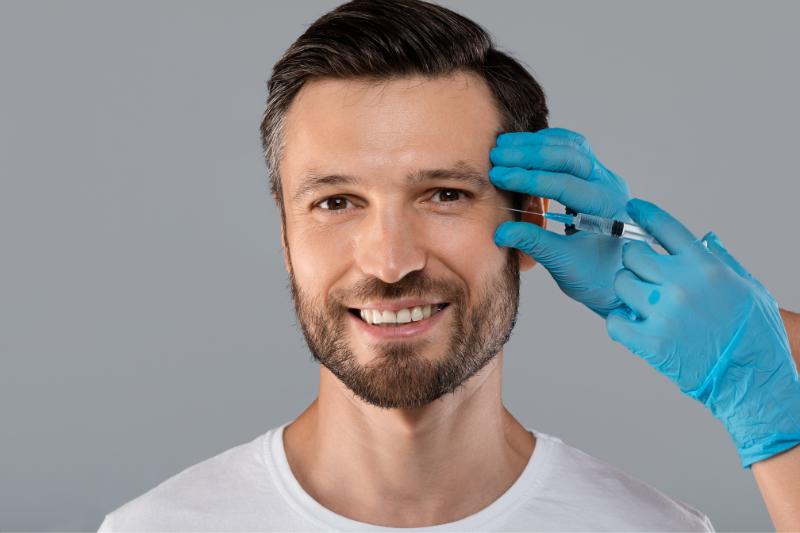

Wrinkle Injections
Hemel Cosmetic Clinic offers wrinkle and line relaxing treatment that has been used to treat millions of patients worldwide for over 20 years…
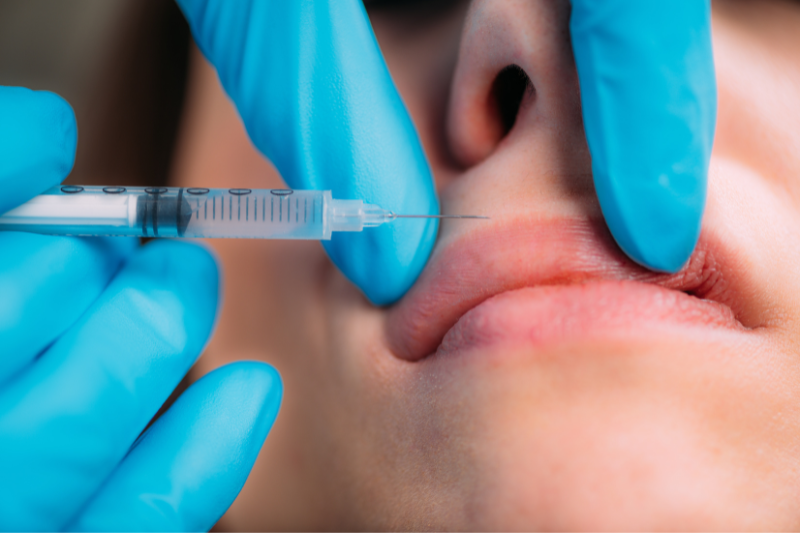

Dermal and Lip Fillers
Hemel Cosmetic Clinic offers a range of non-surgical dermal fillers treatments from both Juvederm Ultra and Restylane…
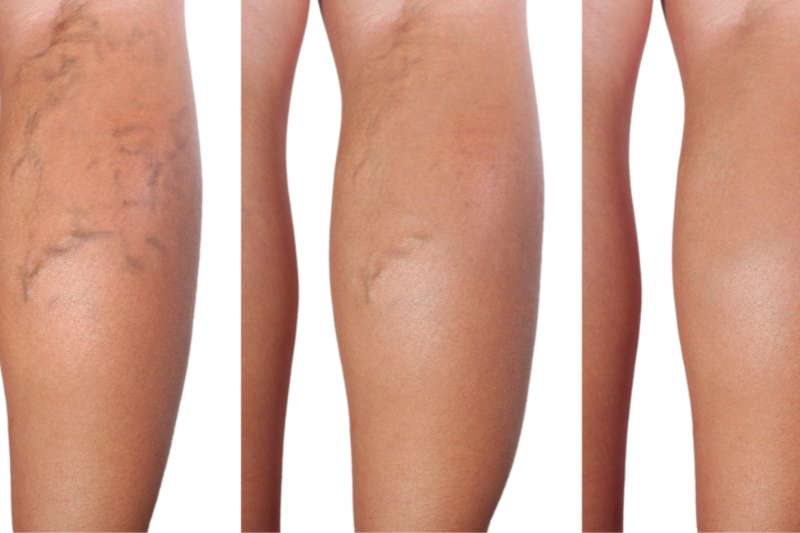

Thread and Spider Veins Removal
What are thread and spider veins? It is estimated that one in four women, and an unknown number of men, suffer from thread veins…
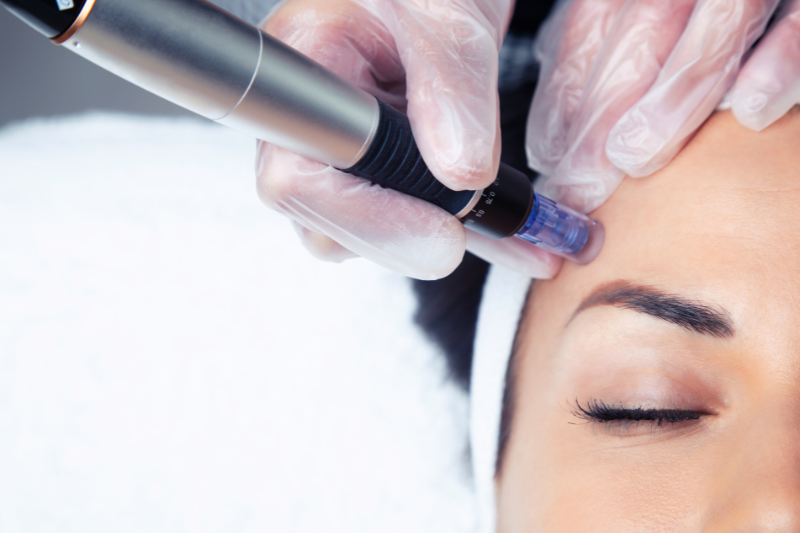

Dermapen/Dermaroller
What is DermaRoller? Dermaroller therapy is a skin rejuvenation treatment that uses the skin’s own healing mechanisms…


Oversweating (Hyperhidrosis)
What is hyperhidrosis? Hyperhidrosis is simple oversweating in various parts of the body. Sweating is necessary to control body temperature…


Skin Tag, Mole, Wart Removal
This is a short video of Dr Bhamra reviewing a patient one week after having a facial mole removed at Hemel Cosmetic Clinic, Hemel…
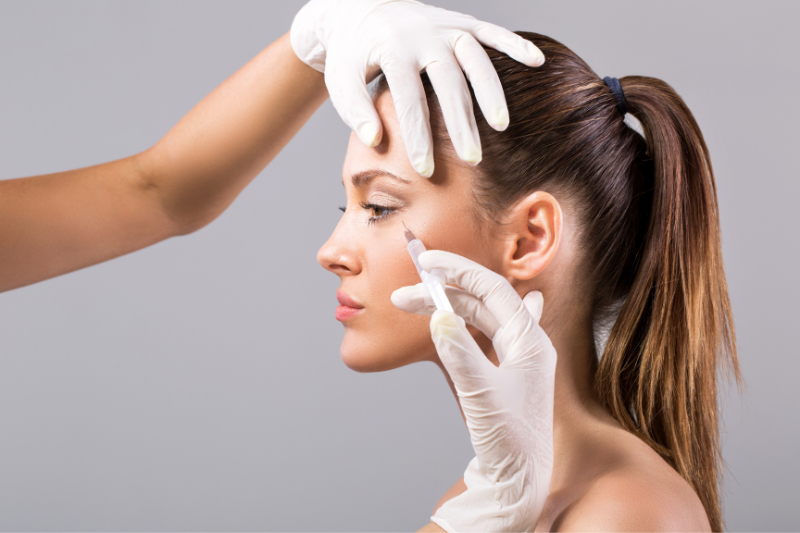

Botox Migraine Treatments
As an Independent Nurse Prescriber, Kevin administers botox for the prevention of Chronic Migraines…















